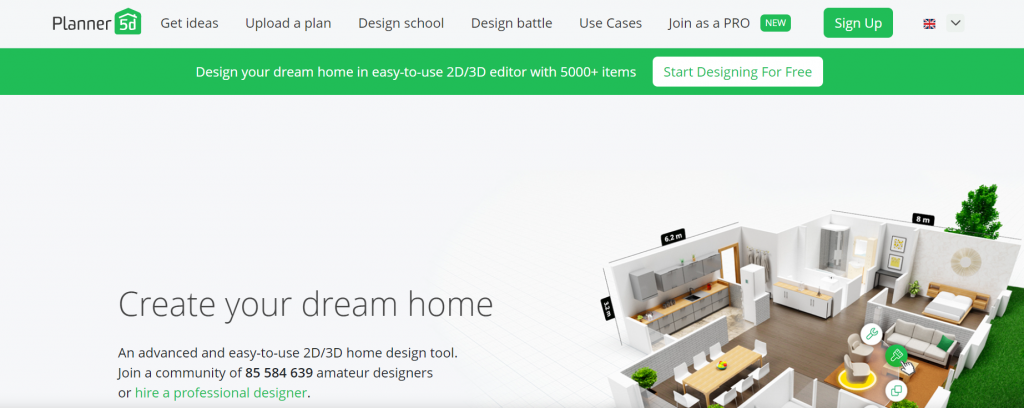
When you think of graphics, what comes to mind? Charts and graphs? Maybe some colorful images to spice up a website or presentation? If you’re like most people, your graphics probably don’t look anything like the ones in this article. That’s because 5D design & layout is all about creating sophisticated visuals that look great and perform well onscreen. In this blog post, we’ll take a look at five things to consider when doing graphics—from layout to typography to imagery. Soon enough, you too will be a master of 5D design & layout.
What is 5D Design & Layout?
There is no one definitive answer when it comes to design and layout for websites. However, there are some key things to keep in mind if you want your designs and layouts to look professional and engaging.
First, make sure that your page can be readable from any angle. This means using a consistent layout throughout the entire page, as well as making sure content is placed in an easily-readable font size.
Next, be sure to use contrast well when styling your pages. For example, use bright colors on sections that will stand out (such as the header), and contrast these with darker colors or elements on other sections of the page. This will help people who are using low-resolution devices read your content without difficulty.
Finally, pay attention to typography. headlines, section titles, and other important text should be easy to read at a glance—especially on large screens or devices where people are likely scrolling down your page quickly. Avoid using too many fonts or effects, and make sure text is formatted correctly so it looks legible no matter how it’s displayed.
What are the different types of graphics?
There are many different types of graphics, and each has its own set of properties and features that can make it beneficial for different situations.
Some common types of graphics include logos, illustrations, icons, banners and buttons. Each type of graphic has its own set of requirements that must be considered when creating it.
Logos
A logo is the most fundamental type of graphic, and is often the first thing people see when visiting your website or reading an article. A good logo should be recognizable and appealing to the eye, and should match the branding and style of your website or product.
Illustrations
An illustration is a picture that is used to illustrate a text or document. They can be either lighthearted or serious in nature, and can be used to show off a company’s unique style or personality. Illustrations are often created using vector art software like Adobe Photoshop or Illustrator, which allows for great flexibility in terms of layout and design.
Icons
Icons are small pictures that represent specific things (like files or folders on your computer), and are used throughout various applications like Windows Explorer or MacOS Finder. Icons can be difficult to create correctly – they need to be simple but stylish at the same time, and they need to fit into the overall design style of your application. It’s important to choose icons that will be easy for users to find and understand.
How do you create a graphic?

When creating a graphic for a project, there are a few things to consider. First, what do you want the graphic to represent? Is it for an advertisement or a website? Once you have decided on the purpose of the graphic, think about what type of graphic design will best suit your needs. Do you need textured images or cleaner ones? Do you need plenty of white space or do you prefer lots of detail? Once you’ve determined what type of graphics will work best for your project, take into account the dimensions and resolution that your final product will be displayed at. Lastly, think about how long it will take to create the graphic and budget accordingly.
Things to consider when doing graphics:
When it comes to creating graphics or designing layouts, there are a few things to keep in mind. Here are a few tips to help you get started:
1. Use meaningful and descriptive titles.
When you’re naming your files, make sure that the titles are both descriptive and meaningful. This way, anyone who looks at your work will understand what they’re seeing and won’t have to search for information. Titles like “Header 1” or “Background 1” are good examples of titles that meet this criterion.
2. Keep your files organized.
Make sure your files are well-organized so that it’s easy for others to access them and understand what they represent. For example, if you have several backgrounds in one file, group them together by folder name (like ” Backgrounds “) so that it’s easier to find them later on.
3. Follow the principles of good design.
When designing graphics or layouts, always follow the principles of good design—this includes using balanced and contrasting colors, using typography for emphasis, etc. This will help ensure that your work looks professional and appealing to viewers
Get Graphics Help From Planner5D Website

The Planner 5D gives everybody a chance to create a professional-looking home, landscape, and office floorplans and designs. Create the space you’ve always dreamed about, whether you’re a skilled designer or just a beginner.
Our intuitive tool lets you experiment with different elements of home planning and see the results in impressive 2D plans and 3D visualizations or try Virtual Reality tour through your project. Learn new skills with our Interior Design School.
We started this project to help non-professionals visualize their future homes with simple tools. Coming from years of experience in design software development and architecture, we realized that not everybody could have the means to commission an agency or time to make proper research of who to hire.





